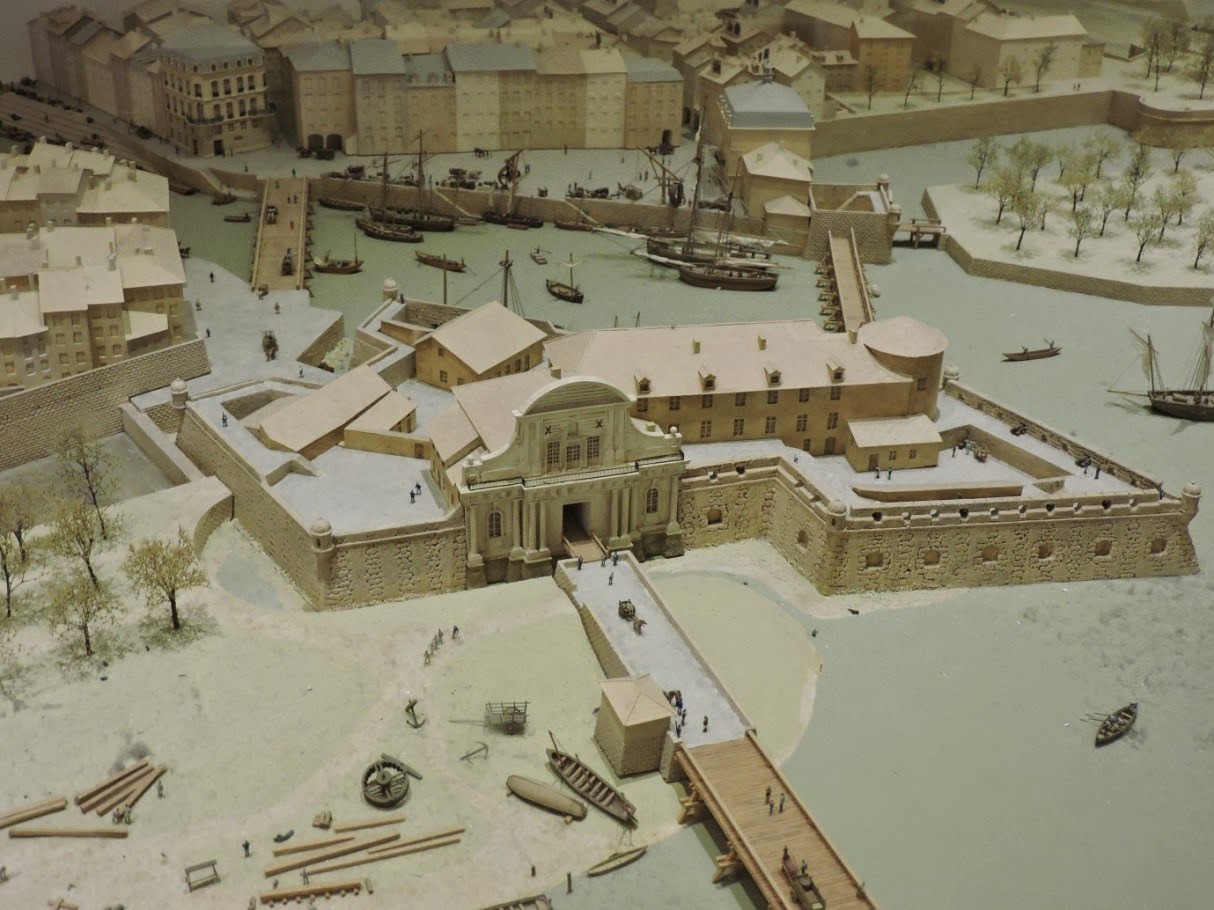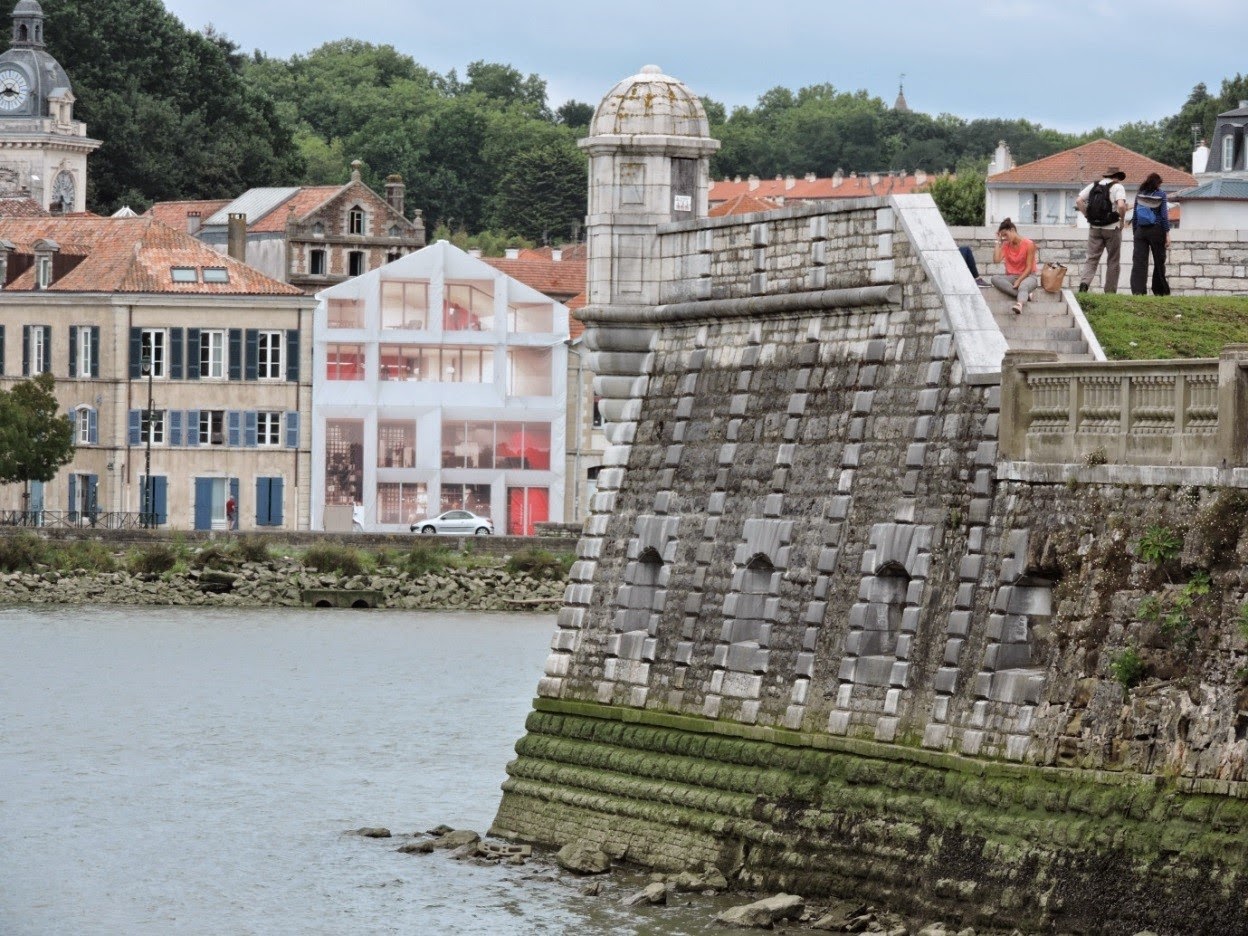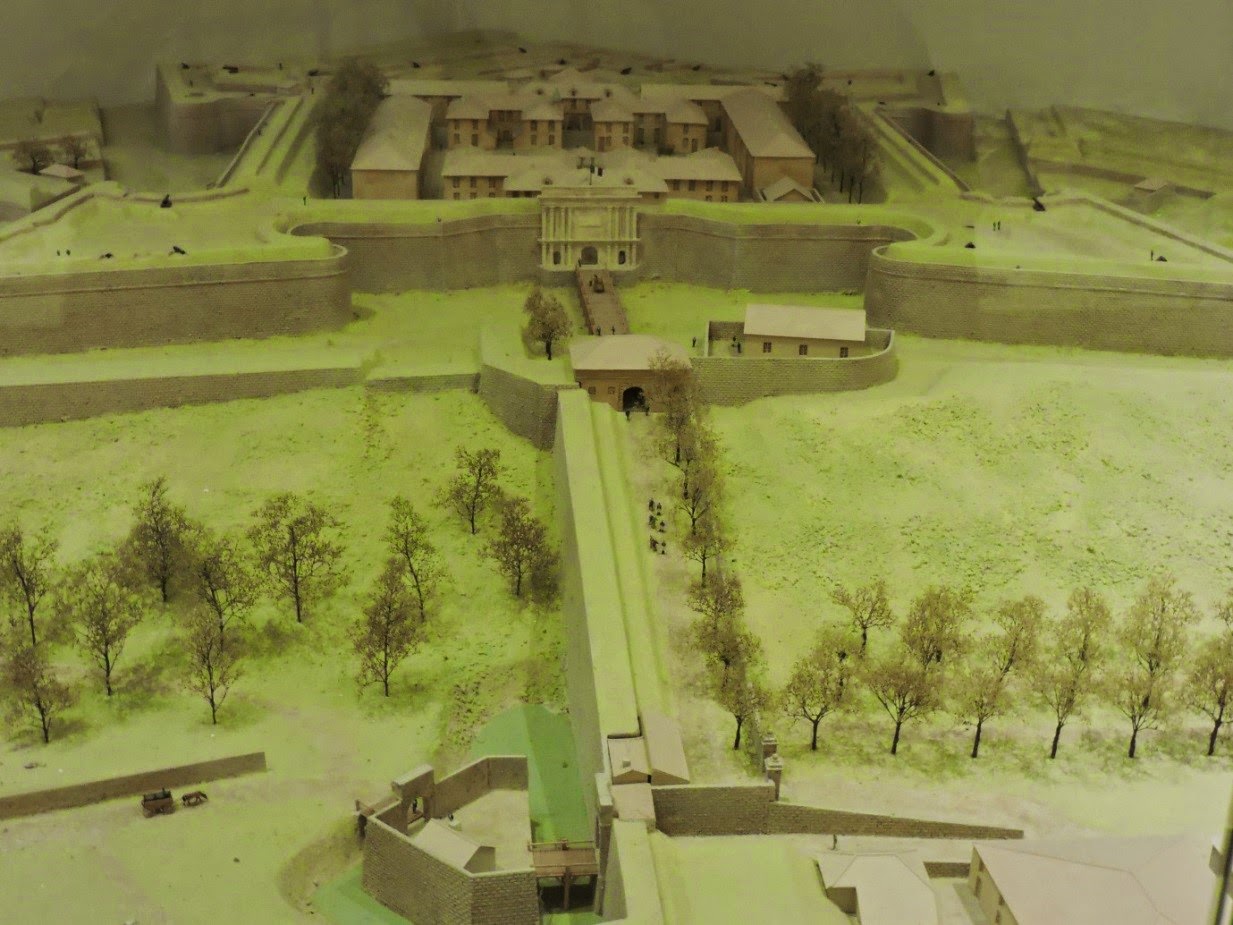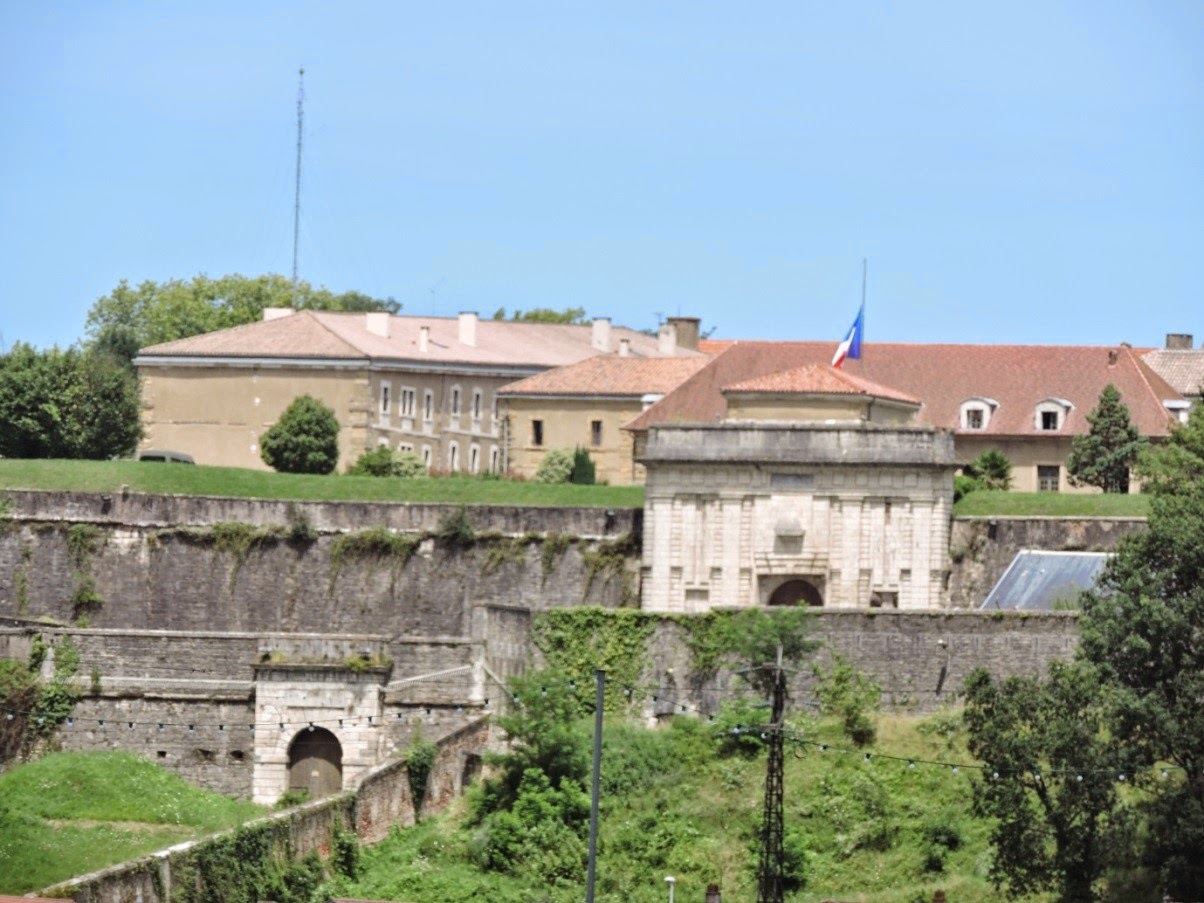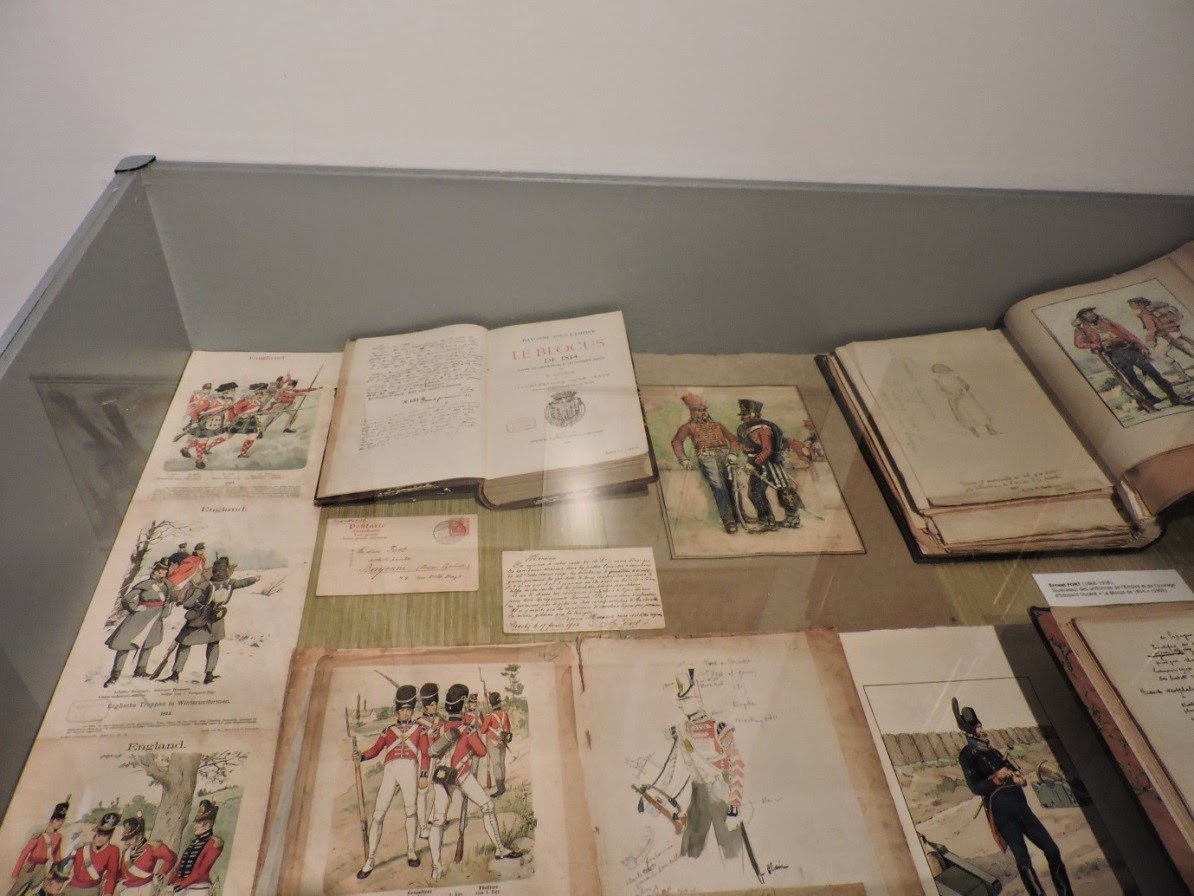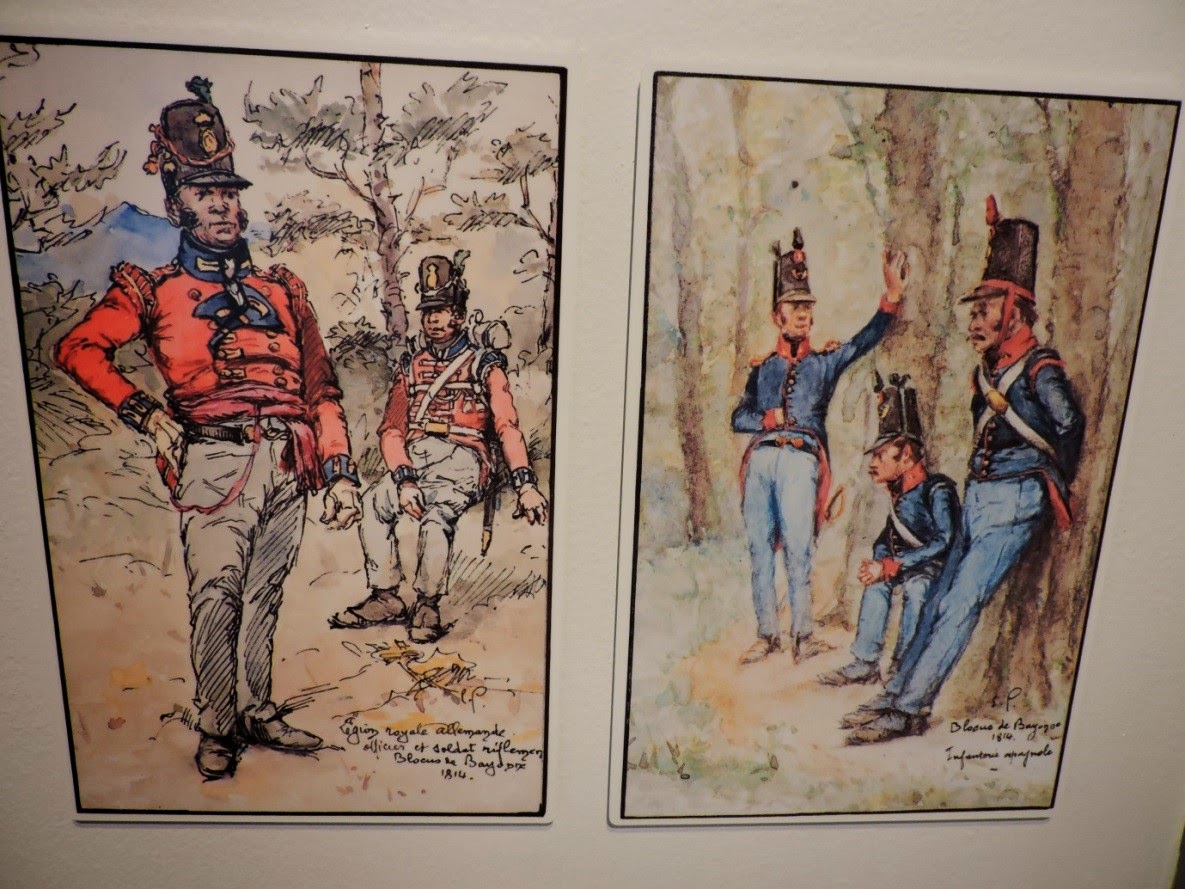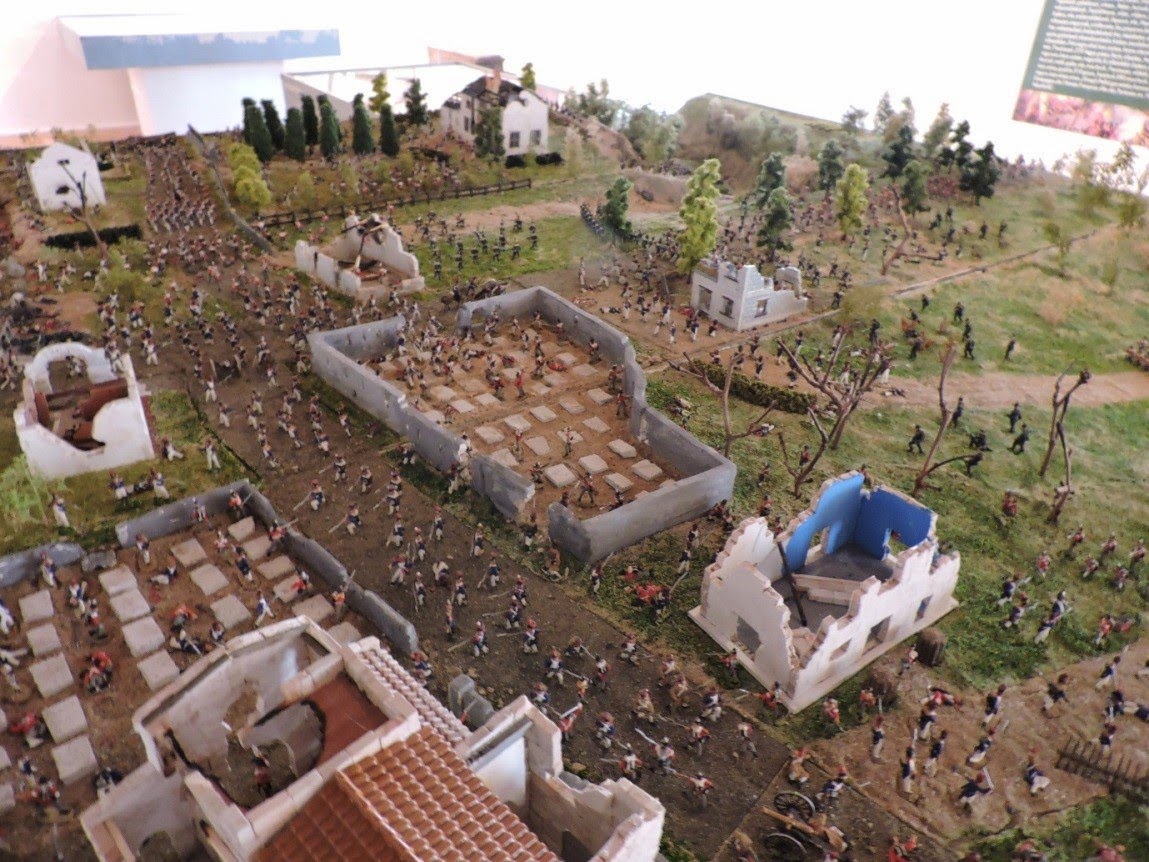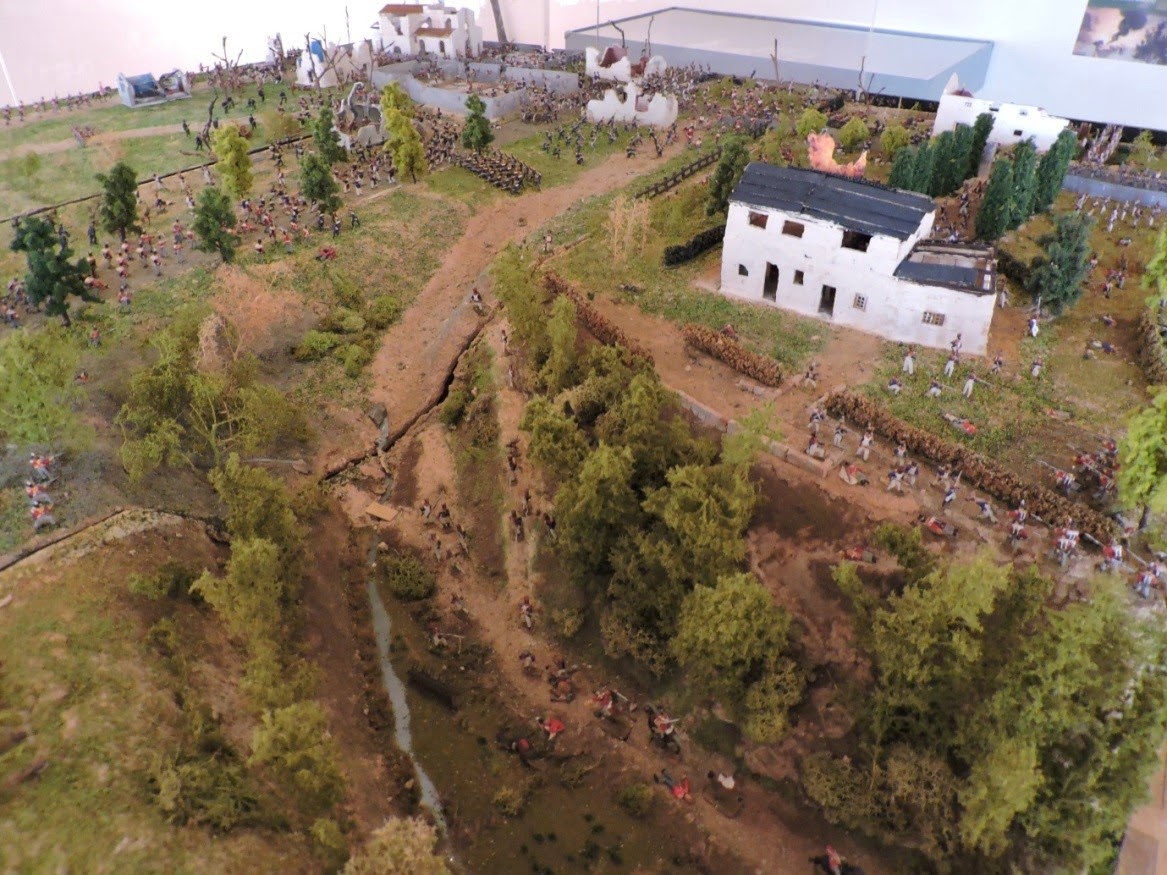Peter Allport - Bayonne is a beautiful small city in south west France where
the wide River Adour flows into the Bay of Biscay and the smaller but
historically-resonant river Nive bisects the town. In a typical Basque seaman’s
house on the quay where goods used to be stored on the ground floor is now the
museum of Basque History. As luck would have it, this summer the museum has a
special exhibition with the theme ‘in the shadow of the Emperor’. This features
the events of 1814 culminating in the French Sortie from Bayonne to attack the
residual portion of Wellington’s
surrounding and victorious army under General Hope…
The building itself is historically interesting and explores the Basque culture which is strong and largely rural but colourful and distinctive – stretching as it does across the Pyrenees in France and northern Spain. We may think of the Basques as a Spanish people but in fact ‘Proud to be Basque’ resonates everywhere in this region – all the street and directional signs are written in French and Basque.
On the 4th floor is the temporary exhibition.
Bayonne was a well-fortified town because of its strategic position on the
route to Spain. The paintings illustrate the fortifications built prior to the
30 Years War and earlier and then reinforced by Vauban in the late 17th
century – more of that in a subsequent post –
Below is a Bastion with two guerites at the confluence of
the Adour and Nive in the centre of the town. The museum is housed in one of
the buildings on the quay in the background towards the bridge.
In one of the rooms there is a fabulous 6-10mm scale model of the city.
It fills the room and stretches down either side in two massive glass cabinets.
Above is the gateway (no longer there) and confluence point of the two rivers.
And here is the same river bastion and guerite today.
Above is the model of the Citadel, built by Vauban on the
northern bank of the Adour on a hill overlooking the town. Today it is still
occupied by the French military and is not open to the general public. French
Special Forces have their HQ there! The flag at half-mast today…
The model illustrates how the town looked in the 18th century. Trees line the esplanades and the houses cram together behind the massive walls and ramparts.
The image of Napoleon is everywhere despite a weak
connection with city. Bayonne was however
very loyal to him but by the time of the infamous sortie in April 1814 he had
already abdicated, was saying goodbye to the Old Guard at Fontainbleau and heading
for Elba.
The exhibition contains diaries and journals including these fabulous illustrations of the uniforms of the British and French troops in the last days of the Peninsular War. The fact that these were drawn at the time gives them an immediacy and impact… That’s how it looked then… two hundred years ago in clock-time, but only yesterday in another sense…
In addition to a fascinating range of paintings, drawings,
cannon balls, cutlery, officer’s boxes in one of the rooms is a centrepiece
diorama in 1/72nd scale with hundreds of individually-based figures
illustrating the action around the church of St Etienne on the north bank of
the Adour. The French, led by Thouvenot broke out into the half-hearted siege
works of the surrounding British and captured General Hope and killed General
Hay. Each side lost over 100 killed and several hundred wounded. It was a last
hurrah of a defeated opponent…
Some of the detritus of battle, recovered from the banks of
the River Nive and the encircling forests. The exhibition provided inspiration
and enjoyment for a couple of hours. Bayonne would make a perfect town to
create an imaginary siege- fabulous wargame potential.
Later in the week, the well-preserved fortifications
overseen and developed by Vauban were on
the walking schedule…and that will be the subject of another post.
Holywell Hill



